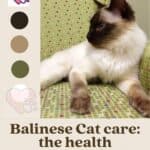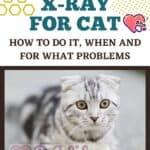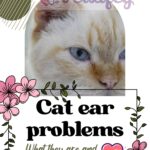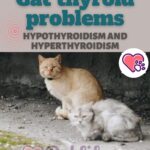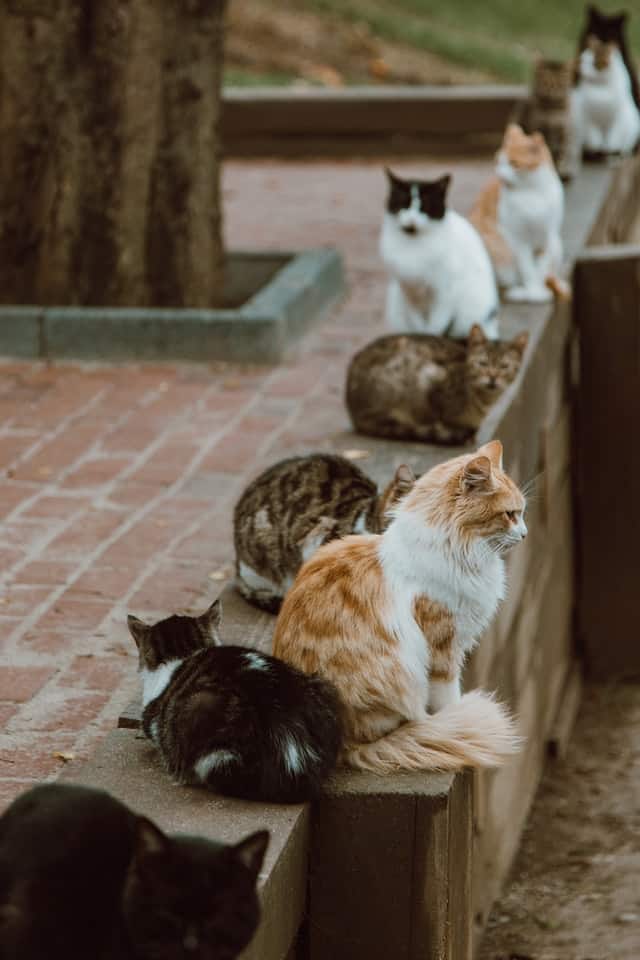
The breeds of cats with less health problems: let’s see what the characteristics of these magnificent specimens of healthy and robust constitution.
There are certain breeds of cats with fewer health problems, with this we do not mean that there are cats more prone to diseases, but that by constitution those we are going to treat are more robust and resistant.
The breeds of cats with the least health problems
Cat breeds with fewer health problems are certainly influenced by the factor of family history and great genetic diversity. In this article we are going to cover the main breeds that enjoy good health for most of their life.
While due to poor breeding practices, some breeds are prone to certain genetic health problems. This does not mean that every cat of that breed will develop these diseases; it just means they are more at risk. Below is a description of some of these cat breeds with fewer health problems.
American Wirehair
The American Wirehair is a cat of American origin, its main distinguishing feature is its fine, coarse and curly coat. On the other hand, his mustache is curly, aesthetically very appreciated, as well as the hair on the ears.
He is a cat who loves adventure and does not hesitate to spend hours outside. But that doesn’t have to scare us, this breed is known to have iron health, very resilient. This feline requires little care to stay happy and healthy.
It will need to be brushed once a week or at least once every 10 days. Remember that during the moulting seasons, spring and fall, it will be necessary to do this every day to prevent skin allergies. The ears also tend to get greasy, so they will need to be cleaned once a week. This will prevent the accumulation of dangerous germs and parasites that could trigger infections.
Maine Coon
Among the cat breeds with less health problems is the Maine Coon is considered the only long-haired cat breed originating in the United States. This cat is famous for being one of the largest in the world when it comes to domestic cats.
The Maine Coon is a powerful, sturdy and very strong cat, making an exceptional pet thanks to its sweet and friendly character. It is by nature a sociable and playful cat, which with little effort will get along with people of any age and also with other species of animals.
He loves to stay outside for a long time even on dull days, but his coat is waterproof and allows him to spend many hours in the open air to hunt or play without the risk of getting sick.
You will need to brush it frequently, once a day if possible, but always at least three or four times a week. This breed usually loves to bathe and play in the water which is an advantage in maintaining the hygiene of the animal.
Thai cat
The Thai cat is among the oldest known cat breeds. It represents the traditional morphology of the Siamese cat. Of Asian origin, but it has not been possible to identify the wild species from which it descends. It has a characteristic chiaroscuro-shaded coat, adherent to the body, silky and soft.
Sociable, outgoing and talkative, intelligent and lively, a lover of company and cuddles, he often seeks physical contact. Given his short hair and his almost equatorial origins, he suffers from low temperatures, so he really likes to have a warm and clean bunk at his disposal, but ‘adapts’ very well to resting on beds and sofas.
It requires a lot of attention but does not require special care and does not get sick easily. Belonging to an ancient natural breed, which has not undergone heavy selective interventions, it is strong, healthy and decidedly long-lived.
Bengal
Among the cat breeds with less health problems there is the Bengal cat is a hybrid, this means that it is the result of the crossing between a domestic cat and a leopard cat. It has a sturdy and muscular body, smooth skin and a striped pattern with very characteristic shapes.
The colors range from ocher, orange, cream, yellow and its spots, also called “rosettes” of brown and dark tones. Its lively, playful and curious character, even water. It is an atypical cat who loves water. The Bengal is not only a cat that gets little sick, but it is also one of the “hypoallergenic” cats.
Ideal for those who love cats but are allergic to their fur. The Bengali hardly needs any care to keep his he appearance of him in perfect condition, he enjoys good health. You will only need to take care of the ears, they should be cleaned more frequently, as the Bengali produces more ear wax than other cats.
European
The European common cat is also known as the “Roman cat” as it spread throughout Europe at that time. It is a strong and robust breed, it is part of the rare natural breeds, which means that it has not undergone crossings over time.
This gives it robust health and prevents it from a predisposition to genetic diseases. It does not require excessive care to keep fit, it can reach 15 years, it will need to be brushed once a week using brushes for short-haired cats.
Just the hair is what characterizes it the most: short, soft, fine and shiny. He is a very intelligent cat with a great learning ability although he can be very stubborn at times. He seeks his owner’s affection, even though he can be hostile to people he doesn’t know.
Ragamuffin
The origins of the Ragamuffin are a bit uncertain, it is a sturdy cat with shorter and thicker hair than that of the Ragdoll and with a variety of colors and patterns. It has a fairly docile and affectionate character, it has characteristics more similar to a dog than to a cat.
He is very sociable and friendly even with strangers. They are a very small breed, but they still love to climb and play which is why you should have ample indoor space available as they don’t like to venture too far outside and therefore don’t risk getting sick with diseases circulating outside.
It only requires regular brushing, about 2-3 times a week using a long metal-tipped comb. The teeth, ears and eyes also need to be disinfected every week.
Carthusian
The Chartreux is a cat whose origins are not entirely clear. According to some, it could derive from the Carthusian monks, who used to raise them. Others believe that the name is associated with Carthusian wool, of which the cat’s coat seems to recall many characteristics, so much so that traders often exchanged them.
In fact, this cat has a very soft and gray hair, in contrast with the copper color of the eyes. The Carthusian cat loves cuddling and being in physical contact with its owner, it is called cat-dog “for the special bond it establishes with humans.
It adapts very well to apartment life being of a calm nature, thanks to which it also approaches well to the other animals in the house. Generally it is a breed that enjoys excellent health. It does not require specific attention and is not affected by any genetic disease. Nails, eyes and ears should be cleaned and checked periodically
Manx
The Manx is the cat of the Isle of Man, it has a muscular body, the head is round, large and round eyes and a rather thick hair that can have different colors and designs. A peculiarity of this cat is the tail.
But despite the absence of a tail, the Manx is a powerful and agile cat, its powerful and pronounced rear helps it to maintain balance by making up for the lack of the natural counterweight provided by the tail.
It is an extremely intelligent, loving and playful cat, very attached to the family. He does not like solitude, unlike other cats, but on the contrary, he loves company. Thanks to his robust health and the fact that he takes longer to reach maturity than other cats, it is not uncommon for him to reach 20 years of age.
Siberian
The Siberian was probably born from the crossing of local cats with cats brought by some settlers in Siberian Russia, during the sixteenth century. In Russia, however, the Siberian cat is the national cat. In fact, given its origins it had to adapt to the harsh climate by strengthening its thick fur.
He also has a very muscular, yet agile body. The coat is water repellent and the coat is semi-long all year round. The color ranges from classic brindle red to black, with the exception of lilac, chocolate, cinnamon and fawn.
Siberian cats with “colorpoint” coloring with a Siamese motif, that is, with the darker extremities of the body. A peculiarity of this breed consists in its total or almost inability to produce the Fel D1 protein. Temperamentally he is very active, playful and ideal in families with children.
It is a very hardy cat, thanks to its ancestors who managed to survive the extreme living conditions of the great north. He doesn’t need special care. In fact, he does not need to be brushed except once a week, for the rest he takes care of its cleaning by himself.

